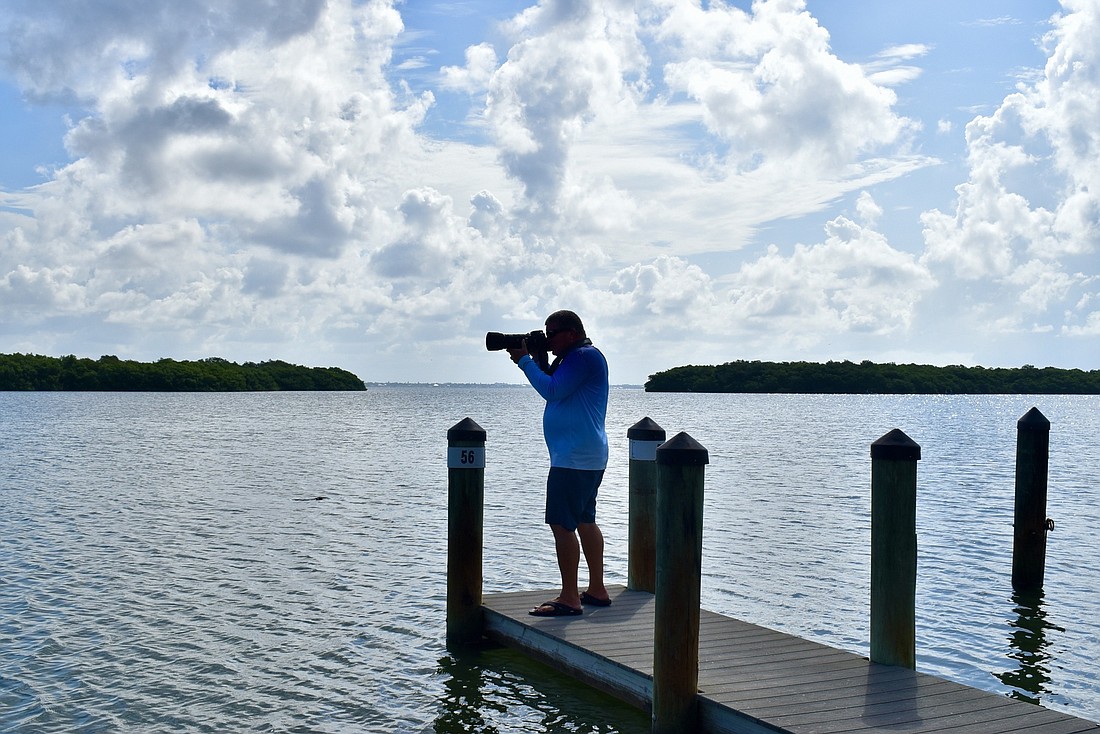- January 23, 2025
-
-
Loading

Loading

Looking at John Harkness’ photos, you’d think they were taken by a seasoned, professional photographer, but that's not the case: He started with an iPhone two-and-a-half years ago. In that short amount of time, he’s accumulated a Facebook following and has also sold photos.
Harkness was happy with his iPhone and wondered if he’d use a real camera. The question was asked and answered when his fiance bought him a Nikon D5600 for Christmas two years ago. “I haven’t put it down since,” he said. “I hate to call it an obsession, but it’s my new hobby.”
Harkness credits the “University of YouTube” for his education. “There are world-class photographers out there that explain camera settings, techniques, whether it be for landscapes, seascapes, low-light photography, whatever, but the majority of what I’ve done is watch YouTube videos and just practice.”
As a Longboat Harbour resident, Harkness takes most of his pictures in his backyard. His condominium is on the first floor and overlooks the bay. There’s a chair in the corner of his sunroom where he likes to read. He’s often interrupted by a passing dolphin or a sunset he can’t resist.
Harkness is leery of photographing people because there’s too much pressure to get it right. He also prefers to socialize with friends and family in those special moments and says you miss too much when you’re always behind the camera. He made an exception for his soon-to-be step-son’s engagement and was happy with the results, but animals and the sun are his two favorite subjects.
When photographing animals, Harkness focuses on the eyes. “The eyes tell the story. To me, that just makes the picture.” And flat water is his favorite condition when snapping the sun rise or set. “It turns into a black mirror, so all the reflection for the sky is transposed to the water,” he said.
Harkness started visiting Longboat Key in the 1960s because his grandparents lived in Sarasota. “Of course, there was nothing on Longboat Key back in the '60s,” he said. He has an old picture of himself holding a bucket on an empty beach. He laughed and said he might re-create it one day.
Harkness grew up in Detroit. After his parents and brother moved to Virginia, he followed and became a firefighter. He moved to Longboat in 2018, after his retirement. His earlier roles as an emergency manager and a fire chief showed him firsthand Facebook’s reach.
When conveying important information to the public, he saw better results from Facebook posts than alerts from the county’s emergency management system. “I hate to say it would go viral,” Harkness said. “But in a county of 30,000 people, we’d have 10,000 views, so that was a great route.”
Most but not all of his Facebook friends are complimentary; some criticize his use of Lightbox, a photo editing software. Those comments sound part incredulous and part suspicious, he said, but they seem to be asking one main question: Why don’t my photos look like yours?
Harkness pays more attention to the criticism than the accolades because someone might see something he didn’t. But he also offers an astute argument as to why he’s not faking anything by using Lightbox: Ansel Adams, a renowned pre-technology photographer, adjusted his camera settings before taking pictures, but a lot of the adjustments to those famous black and white photographs were done in the darkroom through the use of chemicals and other techniques.
Harkness also said the cool thing about photography is that a camera picks up details and motion the human eye either can’t or misses. “We have 20/20 vision, but it’s only in the center of our field of vision.” Still, Harkness agrees that there’s a fine line when it comes to using Lightroom.
“It’s not cheating. It’s just bringing out the best of an image,” he said. “I’m trying to get it right from the get-go, but there are times that you have to adjust it in Lightroom. Most of the time, it’s adjusting the exposure. Either you’ve overexposed or underexposed, and that really makes a huge difference as far as the overall appearance of the picture.”
Harkness also admits to completely blowing it sometimes but was lucky enough to get a do-over recently. A friend messaged him that a turtle was nesting near the Zota Beach Resort. He used a slow shutter speed with a long lens and ended up with motion blur. “They just weren’t sharp,” he said.
He went back the next day just after sunrise and arrived in time to see the turtle finishing its nest and returning to the water. He fixed his mistakes from the day before and got his shots, but Harkness never stops looking for the next best one.
When talking about one of his favorite birds to photograph, black skimmers, he said he still hasn’t gotten the money shot. “It’s going to be coming by, you’ll be able to see its little beak in the water, and you’ll see the ripples in the water. I don’t have that yet, but I’m getting close.”
Harkness offered two easy tips for beginners to instantly up their photography game: When photographing animals or people, go for the eyes. And check that the horizon line is straight before snapping a shot of the next sunset.
But to Harkness, every picture comes down to the old adage “Beauty is in the eye of the beholder.” Many of his personal favorites are photographs he said wouldn't mean anything to most people. But to his eyes, they’re money shots.